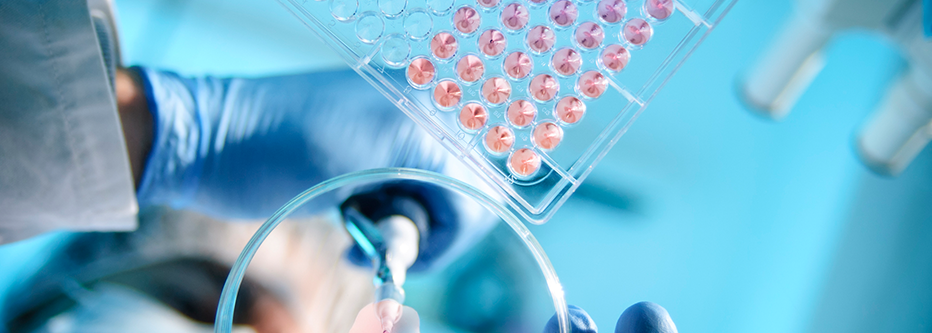
In recent years, there has been a considerable increase in research and development of ATMP (Advanced Therapy Medicinal Products), a broad category of medicinal products that includes cell and gene therapies and RNA therapeutics. This has resulted in many products reaching the market, with thousands of new therapies also in preclinical and clinical stages.
Therapy and treatment focus areas
The emergence of these treatments and therapies requires a flexible approach to manufacturing. In response, solutions providers are delivering facilities with the flexibility to manufacture a varying range of products. From mRNA vaccines to emerging diabetes therapies, each one has an increasingly complex set of requirements.
For the purposes of this article, we will focus on the following therapies and treatments, whose specific manufacturing requirements are itemized in greater detail in the Appendix below.
- Autologous and allogeneic CAR-T cell therapy
- Stem cell therapy
- Gene therapy and viral vectors
- Oligonucleotides
- Messenger RNA (mRNA) / Lipid Nanoparticles (LNP)
- Monoclonal antibodies (mAbs)
- Plasmids (plasmid DNA)
How multimodal, flexible suites and facilities work
Multimodal, flexible suites and facilities can deliver on these requirements. Multimodal, flexible suites comprise a single operating suite or room that is designed to accommodate the production of a number of modalities – defined here as a method of treatment, for example cell therapy. These suites allow biopharma companies to transition rapidly and produce multiple modalities across the course of a year.
Multimodal, flexible facilities facilitate concurrent manufacturing in multiple modalities in the same facility core. In this instance, there are separate suites for a specific modality, with each one leveraging common facility infrastructure.
Evaluating compatibility between multimodalities
When looking at multimodal suites, it is important to understand that while some modalities are highly compatible, others are incongruent with one another. This means that there is a need to analyze many aspects of a facility’s design to determine the compatibility of these modalities.
One of the most critical aspects for evaluation is whether the product is sterile such as an autologous or allogeneic cell therapy or is it a more conventional low bioburden process like continuous mAbs. This will impact background classifications and the need for unidirectional or bidirectional flows.
Another factor that requires consideration is whether there is need for biocontainment. This is an important factor as many of these modalities have an element of BSL-2 production that impacts air locking and flows, and there may be a need to decontaminate solid waste and liquid waste.
It is also necessary to look at room sizes and ceiling heights in suites because the scale of production can be disparate across different modalities.
While some modalities will not work well in a multimodal flex suite, they could be compatible in a multimodal facility. Like the assessment criteria for multimodal suites, where there is potential to deliver concurrent manufacturing operations in multimodal facilities, there is a need to first establish:
- The potential to deploy common infrastructure and resources across modalities.
- Whether segregation between certain modalities is vital.
- Which modalities are completely incongruent.
Primary and alternative modalities
While processing suites or facilities are designed from the perspective of one primary modality, it is also important to be mindful of changes in the wider biopharma landscape. The emergence of new treatments and therapies mean there is also a need for biopharma companies to evaluate whether suites can support the development of products beyond just the primary modality.
And the best way to accomplish this is to evaluate how those other alternative modalities could fit with the primary modality with regards to equipment, biocontainment, the GMP flows and suite sizes. This approach provides the most effective manner to gauge whether two modalities are congruent.
Before a project starts, it is important to determine whether alternative modalities require additional pre-investments. Biopharma companies must also be cognizant of the fact that these modalities’ requirements are likely to change over the next five to ten years.
Pre-investment planning for this shifting landscape is also crucial to ensure that each multimodal project meets a range of financial, sustainability and patient care metrics.
We already know that gene therapy, viral vectors, and mAbs work well in a multi-modal setting because they use the exact same equipment, especially in relation to upstream processing. Therefore, there is scope to include mAbs as a complementary modality to viral vectors and gene therapy without the need for significant pre-investment.
In other instances, compatibility between modalities is not as clear cut. For example, CAR-T cell therapy and stem cell therapy both require similar processing environments – Grade C and Grade B backgrounds with Grade A environments for open manipulations. Depending on the scale, stem cell therapy could be produced with the same bench top equipment and in a suite with similar ceiling height (8 to 10 feet).
These similarities also present the potential of including mRNA and LNP as additional alternative modalities. This is a possibility given the scale of mRNA production. The only variable is that LNP production requires the use of ethanol, a requirement that can be addressed with a fume hood.
In contrast, other modalities do not work well in a flexible suite. For example, CAR-T cell therapy and oligonucleotides are not congruent. Autologous CAR-T cell therapy is scale-out versus scale-up and has a range of specific equipment and room classification requirements. The production of oIigonucleotides requires different equipment and, due to heavy solvent use, may also need specialized construction, such as H occupancy.
More broadly, as the ATMP landscape continues to evolve, it is also worth noting that manufacturing requirements for emerging modalities are also changing. For example, many newer modalities are a lot less utility intensive, to the point that requirements like WFI (Water for Injection), as well as lot of the facility functionality, including equipment and solution prep, could be outsourced. This approach also enables biopharma companies to reduce facility square footage and drive down project costs.
The rapid increase in ATMP means that more therapies and therapeutics are reaching the market. In response, solutions providers are delivering multimodal, flexible suites and facilities that have the capability to deliver products with differing manufacturing requirements.
At the heart of this approach is determining the compatibility between primary and alternative modalities across suites and facilities. Establishing this congruence is a crucial step in delivering potentially transformative medicine to patients, faster.
Appendix
- Autologous CAR-T cell therapy follows a process where a single patient donates their cells, which will then go through a series of steps – isolation/selection, culture activation, genetic modification, cell expansion and harvest . The drug product is then filled and sent back to a single patient. Autologous follows a scale-out process as only a single patient can be processed at a time.
- Allogeneic CAR-T cell therapy is similar from a process perspective to autologous CAR-T cell therapy. The key difference is that a healthy donor will donate their cells, which are compatible with several patients. It goes through the same process steps as autologous cell therapy with the exception that the cell expansion step is larger because more doses can be produced for multiple patients. Allogeneic uses similar equipment to autologous, with the cell expansion and harvest equipment sometimes larger in scale.
- Stem cell therapy is an emerging modality, where donor cells or a donor cell bank is used to scale up. Increasing capacity - up to 500 liters - is being driven by therapies for type one diabetes, with potential for stem cell therapy to scale up to 2,000-liter capacity. Stem cell therapy processes are different than CAR-T as the genetic modification step is done using a series of differentiation media versus the use of a viral vector or mRNA. As stem cell therapy moves towards greater capacity a key consideration is the ability to follow freezing and thaw steps and being able to get therapy to the patient quickly.
- Gene therapy and viral vectors. The key difference in manufacturing these therapies in contrast to fed-batch monoclonal antibodies is that viral vectors have a transfection step that uses plasmid for genetic modification. In contrast, gene therapy actually uses the viral vector for transfection. The equipment is similar to monoclonal antibodies, with up to 2,000-liter single-use bioreactors for scale. Another key difference is that the yields are quite low and the purifcation equipment tends to be smaller in scale.
- Oligonucleotides is a popular emerging ATMP area. The purification process is similar to other modalities, but dissimilar on the front end with chemical synthesis that involves heavy solvent use.
- Messenger RNA (mRNA) and the related lipid nanoparticle assembly (LNP) rose to prominence due to the development of the COVID-19 vaccine. Now it is being redeployed across a range of therapeutic areas. It is a cell-free system and uses linearized plasmids as raw material. The equipment used to manufacture mRNA is common to other traditional biotech equipment, as well as gene therapy and viral vectors. A bioreactor is not necessary, but single-use mixers are common.
- Monoclonal antibodies (MABs) are produced using continuous processing, moving away from larger batch-scale production. This enables manufacturers to squeeze these types of operations into a much smaller footprint that is much more congruent with other modalities.
- Plasmids (plasmid DNA) offer the promise to be used as a drug product. However, its most common use is still as a critical raw material for the manufacturing of viral vectors and to support cell therapy programmes. It has become an essential critical raw material within the realm of newer modalities.
About the authors

Julie Vickers is a process subject matter expert with 29 years in the biotechnology, pharmaceutical and semiconductor industries. Her primary subject matter expertise includes cell and gene therapy, viral vectors, messenger RNA (mRNA), lipid nanoparticle (LNP), synthetic guide RNA (sgRNA), plasmid DNA, as well as monoclonal antibody (mAb) manufacturing.


Peter Cramer, AIA is a principal process architect for Jacobs. Peter has 30 years of experience on a broad range of advanced technology projects including biotechnology, pharmaceutical, and micro-electronic projects. He has expertise in designing biotechnology and pharmaceutical cGMP manufacturing facilities.

Francesca McBride has over 30 years of experience in biopharmaceuticals. She has provided regulatory compliance and validation expertise to clients seeking facility and product licensing or accreditation by regulatory agencies, including the U.S. Food & Drug Administration, National Institutes of Health, Centers for Disease Control & Prevention, the World Health Organization, and more internationally.
From the media
Pharma Manufacturing: How universal design can deliver facilities of the future
European Pharmaceutical Manufacturer: Building A Sustainable Future for the Biopharma Industry
Pharma Manufacturing: Powering Progress in Cell Therapy – Francesca McBride
PharmaTech: Overcoming Operational and Regulatory Challenges in Autologous Cell Therapy Facilities - Francesca McBride
Pharma Manufacturing: Engineering Angles: A flexible future, Brian Ribnicky























































